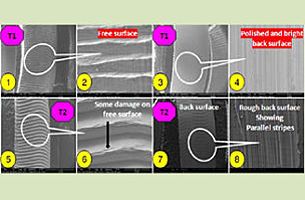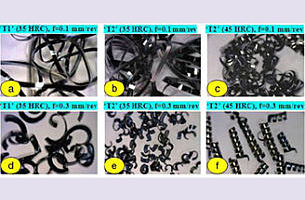Experimental investigations are performed on the effect of different single and multiple layers of materials on cemented carbide inserts and optimum conditions of machining are evolved for high level of surface finish. The impact of different coatings on cutting tool surfaces and their failure mode while machining metals is being studied. Also, the feasibility of forming processes to manufacture different parts across macro and micro-scales are being evaluated using computational technique.
Research Areas
-
Utilization of coated tool inserts for optimized machining
-
Development of in-house, large deformation, damage-coupled, elasto-plastic FEM code (both Eulerian and updated Lagrangian formulations with contact module)
-
Prediction of fracture using continuum damage mechanics in drawing, extrusion, rolling, forging, deep drawing, hydroforming and equal channel angular pressing (ECAP)
-
Optimization of die shape in hot/cold extrusion
-
Estimation of residual stresses in rolling and forging
-
Modeling of multi-pass rolling by including anisotropy
-
Prediction of Earing and optimization of initial blank shape for the prevention of earing
-
Prediction of flange wrinkling in deep drawing using a bifurcation criterion
Research Laboratories:
Manufacturing Science Laboratory
Associated Faculty
S. K. Choudhury, PhD (PLPF, Moscow): Vibration Control of Machine Tools, Adaptive Control System, Metal Cutting, Hydraulic Control, Unconventional Machining
P. M. Dixit, PhD (Minnesota): Metal Forming, Ductile Fracture, Elasto-plastic Impact / Contact Problems and Finite Element Method
 |
 |
Experiments using cemented carbide inserts coated with single-layer TiAlN and CVD coated multi-layer TiCN/Al2O3/TiN
|
SEM chip images of free and back surfaces
|